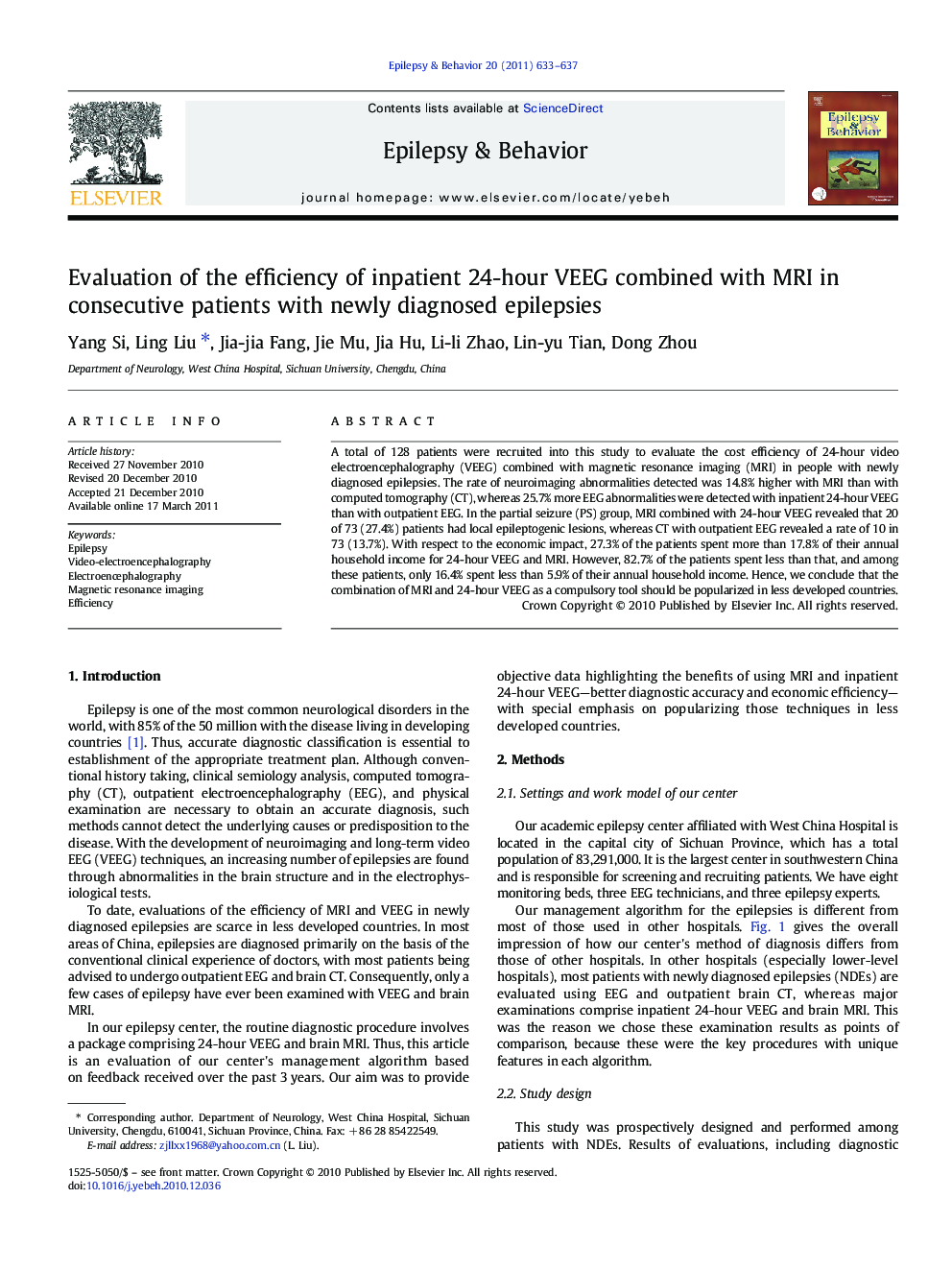| Article ID | Journal | Published Year | Pages | File Type |
|---|---|---|---|---|
| 3049788 | Epilepsy & Behavior | 2011 | 5 Pages |
A total of 128 patients were recruited into this study to evaluate the cost efficiency of 24-hour video electroencephalography (VEEG) combined with magnetic resonance imaging (MRI) in people with newly diagnosed epilepsies. The rate of neuroimaging abnormalities detected was 14.8% higher with MRI than with computed tomography (CT), whereas 25.7% more EEG abnormalities were detected with inpatient 24-hour VEEG than with outpatient EEG. In the partial seizure (PS) group, MRI combined with 24-hour VEEG revealed that 20 of 73 (27.4%) patients had local epileptogenic lesions, whereas CT with outpatient EEG revealed a rate of 10 in 73 (13.7%). With respect to the economic impact, 27.3% of the patients spent more than 17.8% of their annual household income for 24-hour VEEG and MRI. However, 82.7% of the patients spent less than that, and among these patients, only 16.4% spent less than 5.9% of their annual household income. Hence, we conclude that the combination of MRI and 24-hour VEEG as a compulsory tool should be popularized in less developed countries.
Research Highlights► In this prospective study, the efficiency of inpatient 24-hour VEEG combined with MRI in newly diagnosed consecutive epilepsies is evaluated. ► Diagnostic strategies carried out at our epilepsy center over the past 3 years are evaluated. ► Management at our center may represent the entire nation, as our center is the largest academic and teaching center in West China. ► This is the first such study in China and has great impact on the improvement of diagnostic procedures in developing countries.
